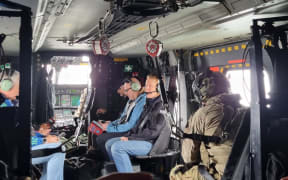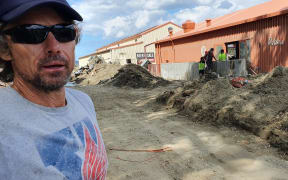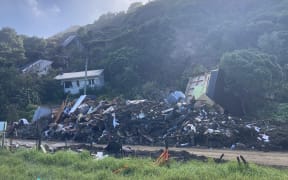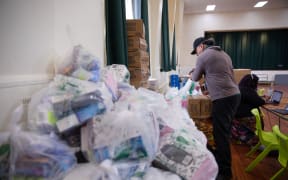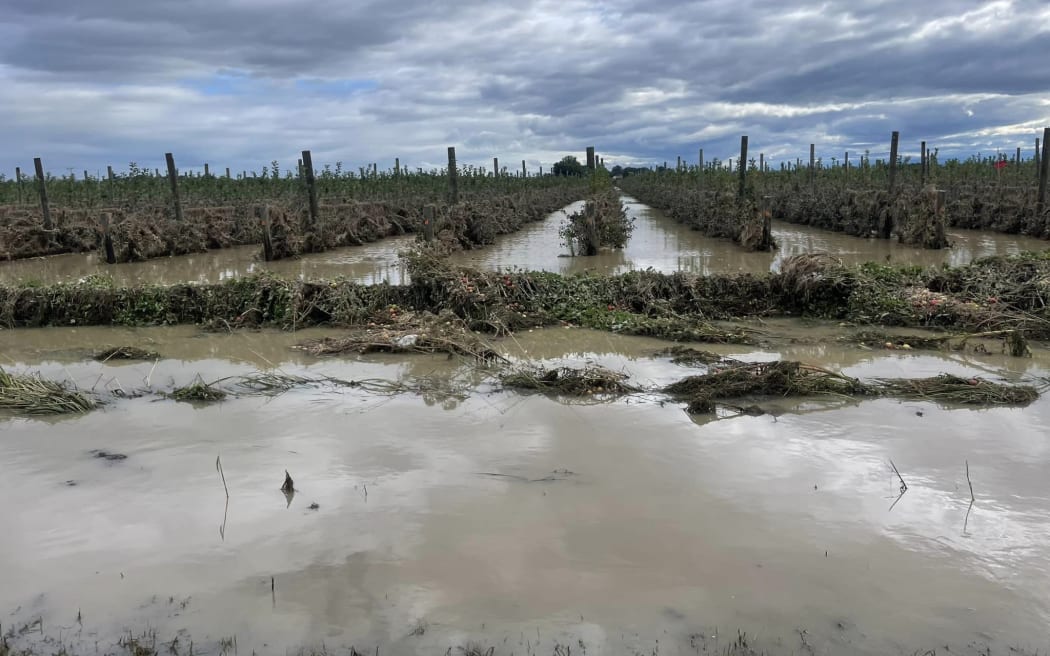
MetService on Thursday morning upgraded its rain forecast for Hawke's Bay to an orange warning. Photo: Supplied / Catherine Wedd
More rain is forecast for the North Island's east coast. But what does this mean for the already soaked and flood-damaged region in the wake of Cyclone Gabrielle?
MetService on Thursday morning upgraded its forecast for Hawke's Bay from a heavy rain 'watch' to an orange rain 'warning', which lasts until 10am on Saturday.
An orange warning means people should take action. It is used when weather is expected to cause disruption and poses a potential risk to people, animals and property.
MetService said to expect up to 200mm of rain about the Hawke's Bay ranges and north of Hastings, with the heaviest rain likely to fall from 3pm on Friday, at peak rates of 20 to 30 millimetres an hour.
The warning included Esk Valley and Wairoa, both areas which were badly affected by the downpour and subsequent flooding last week.
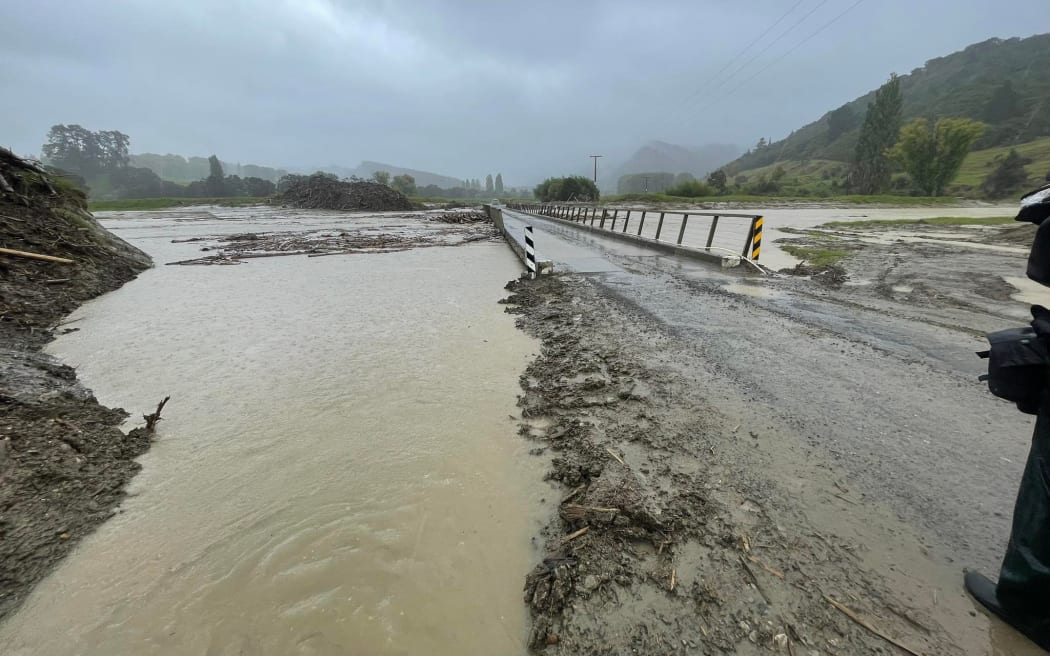
Flooding in Tolaga Bay, Tai Rāwhiti. Photo: Supplied/ Uawa Civil Defence
Te Tai Rāwhiti region is under a heavy rain watch from 2pm Thursday until 2am on Saturday morning, with periods of heavy rain and possible thunderstorms predicted.
Gisborne remains under severe drinking water restrictions, as the pipe network around its main water treatment plant, Waingake, was damaged by Cyclone Gabrielle.
Hawke's Bay Civil Defence warned of rivers and streams rising rapidly, along with surface flooding and slips.
This threat will be particularly pronounced, as saturated ground is less able to absorb the falling rain.
Existing silt deposits will also become saturated, and could shift or collapse. Silt dump stations have been set up in both Hawke's Bay and Gisborne.
What to do
People should be prepared - have a plan, discuss it with your household, have a grab-bag ready with supplies to leave home in a hurry, and check on neighbours and loved ones.
The National Emergency Management Agency (Nema) told people they should not wait for official warnings to evacuate in the event of rising water or slips.
Grab bags should include short-term essential supplies such as medications, snacks, water, torches, pet food and baby formula if needed.

Flooding in Napier. Photo: NZDF / supplied
Residents should clear debris away from drains during daylight to allow water to drain, and wear rubber gloves, sturdy footwear, long sleeves, trousers and a facemask while doing so.
Driving conditions might be hazardous, so people should - as always during severe weather - avoid unnecessary travel.
Keep an eye on the forecast and on nearby rivers, particularly where flooding has changed the course of the river or damaged stopbanks.
Civil Defence advises never to try and walk, swim, or drive through floodwater.

